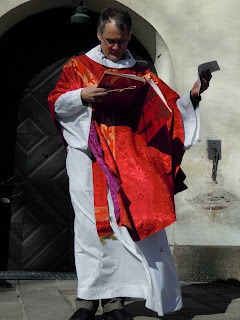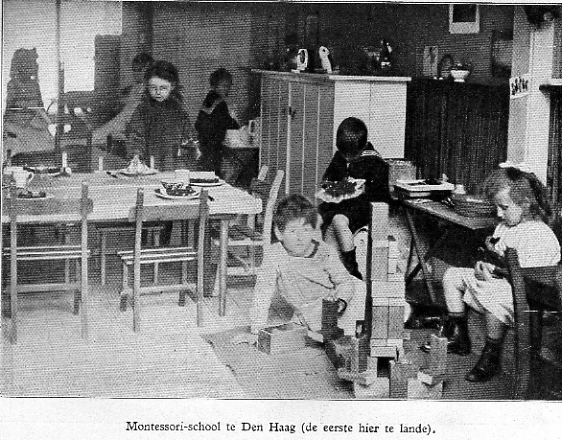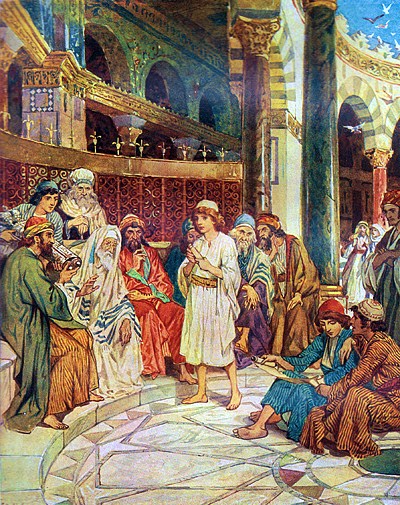Godly Play is one of those activities which encourages you to step out of clock time, from
chronos to
kairos. The goal is to be able to say,
We have all the time we need (and mean it!).
Last year, Junior Church felt awkward and rushed. We left the adult service at the gradual hymn and rejoined them at or after the
Agnus Dei. We could never predict how long the sermon and intercessions would last, so either guessed what time to return (sometimes bumbling in long before the
AD, sometimes arriving to find the organist patiently playing twiddly music and all the adults waiting for us) or, worse, we would be summoned by someone bursting into our room calling,
We're starting communion! Little time to put crayons away properly, certainly not time for prayer or a blessing. It was chaotic.
Now, though,
we have all the time we need. If we are running a bit behind, the priest waits for us, and the parents are not impatient because they are enjoying coffee and fellowship. If the priest is running late, well, we can usually find something to do to fill the extra time.
Last week, a child accidentally went off the paper with a crayon. Unfortunately, this child was pressing hard for a wonderfully brilliant and bold color, which ended up where it should not have. I breezily said,
No problem. You know where the cleaning supplies are! (That was before I had looked at the stain.) Then I walked over to give moral support and my heart sank. I truly didn't think we would get that stain up. But I knelt down and explained what
elbow grease is, and after a bit we began to share the work. I sprayed and the child scrubbed, and we made progress little by little. We swapped roles for a while, and then swapped back. I don't know how long we worked. When Vandriver arrived we hadn't even started the feast... but you could no longer see where the stain had been unless you knew - and once we stood up I lost it altogether.
We then calmly had our feast, a short prayer time, a blessing and our dismissal song.
The child's sense of accomplishment can only rival mine! The stain was
not a disaster, children
can clean up after themselves, and
we had all the time we needed.










































.jpg)